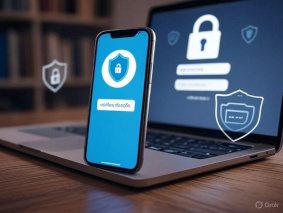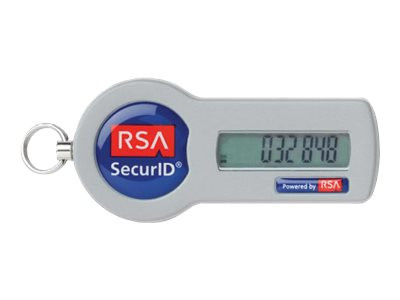Two-factor authentication
P.Leclercq in Security 2025-06-08 governance technology security tips

Two-Factor Authentication (2FA)
What is Two-Factor Authentication (2FA)?
Two-factor authentication is a security method that requires two distinct forms of identification to access an account or system. Unlike traditional password-only authentication, 2FA adds an additional layer of protection.
It relies on a combination of two of the following three categories:
- Something you know: a password, PIN, or answer to a security question;
- Something you have: a mobile device, physical token, or smart card;
- Something you are: a biometric characteristic, such as a fingerprint or facial recognition.
Thanks to this double verification, an attacker who obtains your password cannot access your account without the second factor.
Different 2FA Methods
There are several ways to implement 2FA. Here are the main methods, along with their specific features:
Mobile App-Based Methods
- Examples: Google Authenticator, Authy, or codes sent via SMS.

- How it works: An app generates temporary codes (a Time-based One-Time Password, or TOTP) or an SMS is sent to confirm identity.
- Advantages:
- Ease of use: Most people own a smartphone, making this method accessible.
- Low cost: Apps are often free.
- Independence: TOTP codes are generated locally, without the need for a network connection.
- Disadvantages:
- Device vulnerability: If the phone is hacked or lost, the codes can be compromised.
- Specific attacks: SMS messages can be intercepted using techniques such as SIM swapping.
- Dependency: Requires a charged and functioning device.
Biometric Methods
- Examples: fingerprints, facial recognition, or iris scans.
- How it works: A unique physical characteristic is scanned to validate identity.
- Advantages:
- Convenience: No need to remember a password or carry an object.
- Speed: Integrated into modern devices, it is almost instantaneous.
- Disadvantages:
- Variable security: Poor-quality biometric technology can be circumvented.
- Irrecoverable: If biometric data is stolen, it cannot be changed.
- Errors: False positives or negatives can complicate access.
Methods Based on Physical Tokens
- Examples: hardware tokens, calculators, USB security keys (like YubiKey)…


- How it works: The user connects or inserts a physical token, or reads its code to prove their identity.
- Advantages:
- High security: Requires a physical object that is difficult to steal remotely.
- Phishing resistance: Online attacks are not sufficient to compromise this method.
- Disadvantages:
- Loss or theft: If the token is lost or stolen, access becomes impossible without a replacement.
- Cost: Physical tokens and their replacement can be expensive.
- Convenience: Requires carrying an additional item.
General Advantages of 2FA
2FA offers significant security benefits:
- Enhanced security: A password alone is no longer sufficient; The second factor blocks attackers.
- Attack resistance: Brute force or phishing attempts are much less effective.
- Early warning: Some implementations notify the user of a suspicious access attempt.
General Disadvantages of 2FA
Despite its advantages, 2FA has some limitations:
- Complexity: It can be off-putting for users unfamiliar with the technology.
- Dependency: Losing a token or phone can block access to the account.
- Illusion of security: 2FA is not foolproof and must be complemented by other best practices.
Conclusion
Two-factor authentication is a formidable weapon against cyberthreats. Whether you choose a physical token for its robustness, a mobile app for its simplicity, or a biometric solution for its convenience, it significantly strengthens the protection of your accounts. However, no method is perfect: it’s essential to weigh the pros and cons according to your needs and remain vigilant against risks such as phishing or device loss. 2FA is an essential step in digital protection. Combined with strong passwords and threat awareness, it forms a solid defense against your data.